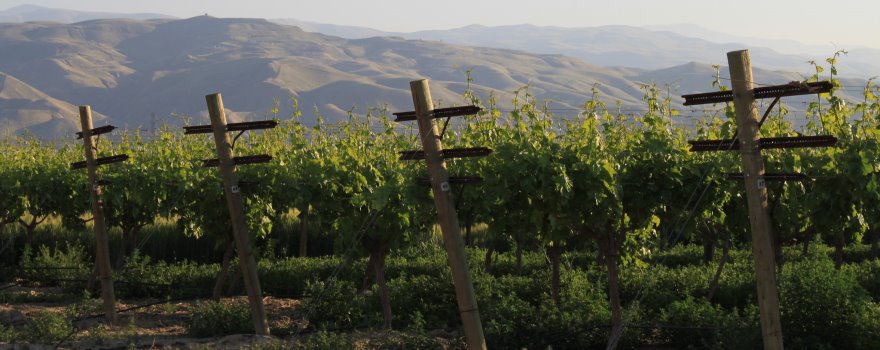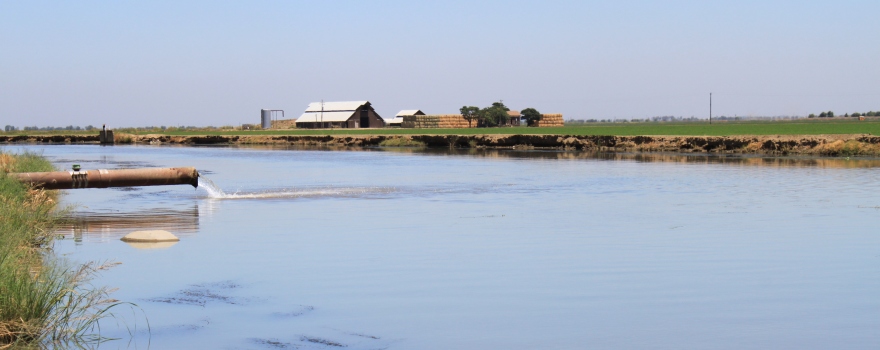Kern County’s recharging basins come with a pesky price
“The recharging basins near Ming and Allen Rd. are filled with water. It’s a comforting reminder that we’ll be okay during the next drought, but with that security comes with a price.
“We have thousands of acres of surface water that can potentially breed mosquitoes,” Gene Abbott, the manager of Kern Mosquito and Vector Control (KMVC) said. … ”
Read more from Bakersfield.com here: Kern County’s recharging basins come with a pesky price
Indian Wells Valley: PAC discusses modeling scenarios
“The Indian Wells Valley Groundwater Authority Policy Advisory Committee talked more modeling scenarios during its May 6 meeting from its angle.
According to committee chair Dave Janiec, the IWVGA’s technical advisory committee received updates on the current three modeling scenarios being developed for groundwater pumping. The scenarios reflect potential options of how the IWVGA could adopt once its groundwater sustainability plan is submitted to the Department of Water Resources.
The plan is currently being developed and is due by Jan. 31, 2020 as required under the Sustainable Groundwater Management Act. … ”
Read more from the Ridgecrest Independent here: Indian Wells Valley: PAC discusses modeling scenarios
SGMA IMPLEMENTATION: Groundwater sustainability goals and challenges
 Groundwater managers working in four critically-overdrafted basins discuss how their planning efforts are going
Groundwater managers working in four critically-overdrafted basins discuss how their planning efforts are going
In basins all over California, groundwater managers are focused on developing their groundwater sustainability plans to meet the deadlines set by the Sustainable Groundwater Management Act (SGMA). For groundwater basins designated as critically-overdrafted basins, the 2020 is right around the corner.
At the spring conference of the Association of California Water Agencies, a panel discussion brought together groundwater managers in four critically overdrafted basins to discuss their near-term goals and regional challenges in complying with SGMA.
Seated on the panel:
- Deanna Jackson, Executive Director of the Tri-County Water Authority
- Brian Lockwood, General Manager of the Pajaro Valley Water Management Agency
- Andrew Garcia, Senior Civil Engineer with the San Luis & Delta Mendota Water Authority
- Eric Averett, General Manager of Rosedale-Rio Bravo Water Storage District
The panel was moderated by John Woodling, ACWA Groundwater Committee Chair and Vice President of GEI Consultants.
During the session, the panel members were asked a series of questions. Rather than writing it up chronologically as I generally do, I have instead assembled the information into a profile for each basin.
Putting a Tempest into a Teapot: Can California Better Use Winter Storms to Refill its Aquifers?
“The general long-term forecast for California as climate change intensifies: more frequent droughts, intermittently interrupted by years when big storms bring rain more quickly than the water infrastructure can handle. This bipolar weather will have profound implications for the state’s $50 billion agriculture industry and the elaborate network of reservoirs, canals, and aqueducts that store and distribute water. A system built for irrigation and flood protection must adapt to accommodate conservation.
“The effects of climate change are necessitating wholesale changes in how water is managed in California,” the state Department of Water Resources wrote in a June, 2018 white paper. … ”
Read more from the Stanford’s Bill Lane Center for the West here: Putting a Tempest into a Teapot: Can California Better Use Winter Storms to Refill its Aquifers?
License to pump: New web portal examines, compares and explains the permitting process of groundwater pumping across seven U.S. states:
“Overpumping groundwater poses a major threat to the availability of a critical resource, especially in the arid lands of the Southwestern United States. States across the region have sought to deal with this issue through a wide variety of regulations and permitting processes.
A new dashboard tool, created by affiliates from Stanford’s Water in the West program, compares groundwater withdrawal permitting – a common tool used by resource managers to limit groundwater pumping – to help plan for a more sustainable future.
“Western states have adopted a wide range of approaches towards regulating groundwater pumping, but information about these approaches are not always shared across the region. Our goal is to help parties in different states learn from what is happening elsewhere. This is particularly important in California, where local agencies are working to implement the Sustainable Groundwater Management Act,” said Leon Szeptycki, executive director of Water in the West and a dashboard contributor. … ”
Continue reading at Water in the West here: License to pump: New web portal examines, compares and explains the permitting process of groundwater pumping across seven U.S. states
To Pump or Not to Pump: New Tool Will Help Water Managers Make Smarter Decisions
“The overpumping of groundwater in California has led to near environmental catastrophe in some areas – land is sinking, seawater is intruding, and groundwater storage capacity has shrunk.
But researchers at the Department of Energy’s Lawrence Berkeley National Laboratory (Berkeley Lab) believe machine learning could be part of the solution to restoring groundwater to sustainable levels and quality. A team of computer and environmental scientists are developing a computational tool that will allow groundwater managers to plan and manage their precious water resources more sustainably, leading to improved resistance to droughts. … ”
Read more from Berkeley News here: To Pump or Not to Pump: New Tool Will Help Water Managers Make Smarter Decisions
Sacramento Valley Watersheds: Regional Collaborative Approaches to Maintaining and Improving Groundwater Quality for Multiple Benefits
Vicki Kretsinger Grabert writes,
“Understanding the status of California’s surface water and groundwater availability and sustainability are key goals of many programs. Sacramento Valley’s water resources managers and communities are proactively and collaboratively engaged in identifying and implementing strategies that support water resources sustainability. This includes protecting groundwater quality for multiple beneficial uses, which is being addressed through the following programs … ”
Read more from the NCWA blog here: Sacramento Valley Watersheds: Regional Collaborative Approaches to Maintaining and Improving Groundwater Quality for Multiple Benefits
SLO County set to extend Paso Robles groundwater restrictions
“A 6-year-old county policy requiring farmers with new crops over the Paso Robles Groundwater Basin to offset their water use is poised for another extension. San Luis Obispo County officials are concerned about a looming “gap” in regulation over the 780-square-mile basin, which has struggled in recent years with development and drought.
First adopted in 2013 amid drying wells over the basin, the county offset ordinance put a theoretical moratorium on agricultural pumping. … ”
Read more from New Times San Luis Obispo here: SLO County set to extend Paso Robles groundwater restrictions
Stormwater recharge abilities enhanced at Seven Oaks Dam
“As Southern California’s most recent rainstorm was moving into the Inland Empire on Thursday morning, May 23, San Bernardino Valley Municipal Water District celebrated the completion of an enhanced recharge project designed to enable the district to capture water from Santa Ana River during rainstorms, improving the district’s ability to recharge groundwater supply by 80,000 acre-feet a year.
The district hosted its partners Western Municipal Water District and Riverside Public Utilities as well as other local water agencies for the opening of a new diversion channel and sedimentation basin constructed south of Seven Oaks Dam and just north of Greenspot Road last year. … ”
Read more from Highland Community News here: Stormwater recharge abilities enhanced at Seven Oaks Dam
ELLEN HANAK: Water and the Future of the San Joaquin Valley
 Ellen Hanak delivers four priorities for managing the implementation of SGMA in the San Joaquin Valley
Ellen Hanak delivers four priorities for managing the implementation of SGMA in the San Joaquin Valley
The San Joaquin Valley is California’s largest agricultural region and an important contributor to the nation’s food supply, producing more than half of the state’s agricultural output. Irrigated agriculture is the region’s main economic driver and predominant water user.
 However, the San Joaquin Valley is at a pivotal point. It is ground zero for many of California’s most difficult water management problems, including groundwater overdraft, contaminated drinking water, and declines in habitat and native species. The Valley has high rates of unemployment and pockets of extreme poverty, challenges that increase when the farm economy suffers.
However, the San Joaquin Valley is at a pivotal point. It is ground zero for many of California’s most difficult water management problems, including groundwater overdraft, contaminated drinking water, and declines in habitat and native species. The Valley has high rates of unemployment and pockets of extreme poverty, challenges that increase when the farm economy suffers.
The Sustainable Groundwater Management Act requires local water users to bring their overdrafted groundwater basins into balance by the early 2040s. With the largest groundwater overdraft in the State, the implementation of SGMA will have a broad impact on Valley agriculture in coming years, and will likely entail fallowing of significant amounts of farmland.
“Water and the Future of the San Joaquin Valley” is the third installment of a research project by the Public Policy Institute of California (PPIC) Water Policy Center on solutions to the San Joaquin Valley’s water challenges. Ellen Hanak is director of the PPIC Water Policy Center and a senior fellow at PPIC. At the May meeting of the California Water Commission, she discussed the findings of their research and recommendations regarding the challenges facing the San Joaquin Valley.
